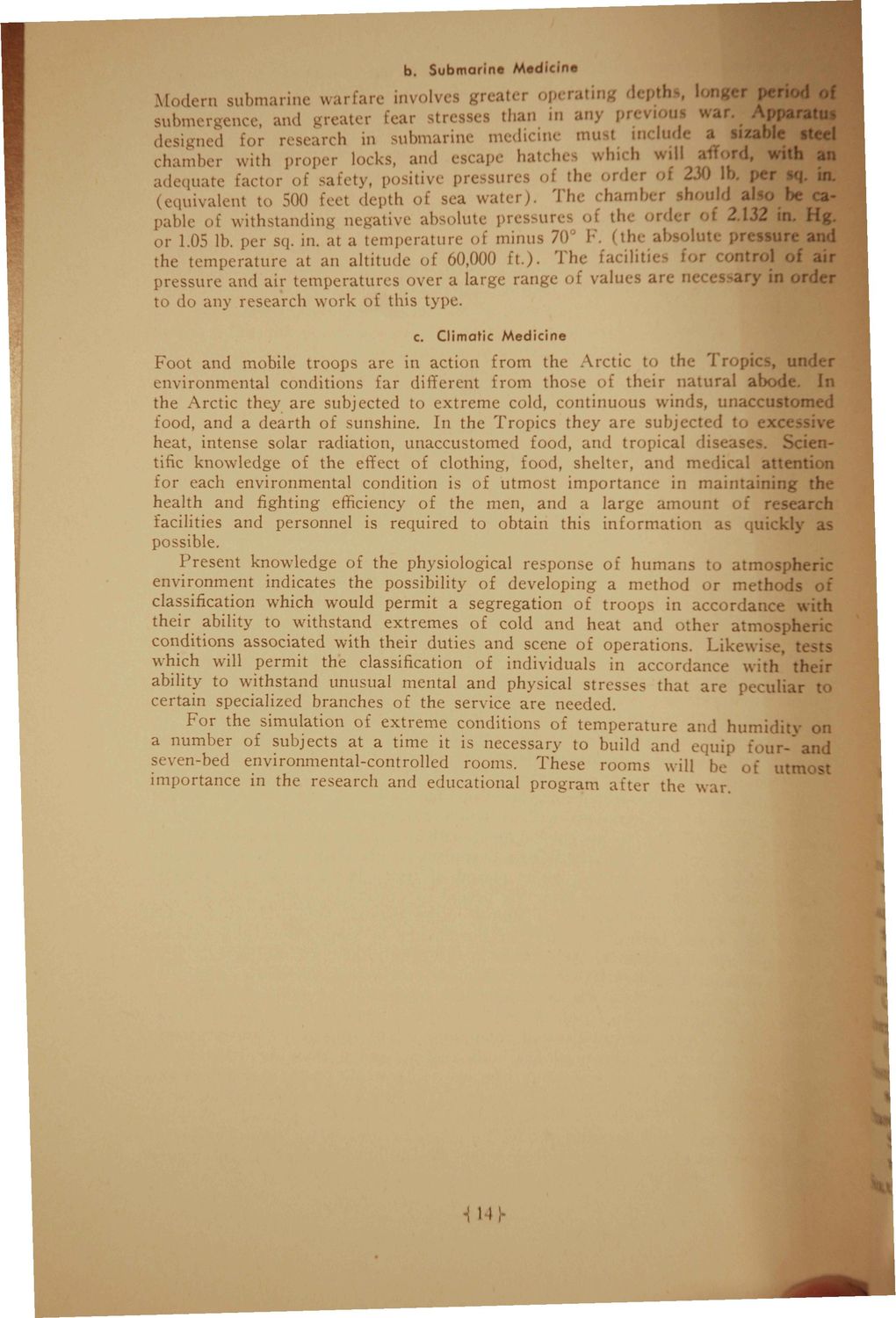| |
| |
Caption: Dedication - Justification and Planning for Willard Airport (1942)
This is a reduced-resolution page image for fast online browsing.

EXTRACTED TEXT FROM PAGE:
b. Submarine Medicine Modern submarine u a r t a . inVOiv< - gi r operating tl X | submergence, and greater fear stresses than in any pre* designed for research in submarine medicine must ii chamber with proper locks, and es hatchi wb h \ 11 wai dc a Appar Me steel i, v h adequate factor of safety, positive pre ures of tin >rder 23 lb per * (equivalent to 500 feet depth of sea water). The chamber $h ild al* be ca pable of withstanding negative absolute pressure of th< rder of 2 132 in. Hg or 1.05 lb. per sq. in. at a temperature of minus 70' F. (th< the temperature at an altitude of 60,000 f t ) . The laeilit; pressure and air temperatures over a large range of vain an to do any research work of this type. c. Climatic Medicine Foot and mobile troops are in action from the Arctic to the Tropic under environmental conditions far different from those of their natural abode. In the Arctic they are subjected to extreme cold, continuous winds, unaccustomed food, and a dearth of sunshine. In the Tropics they are subjc 1 to excessive heat, intense solar radiation, unaccustomed food, and tropical diseas Scientific knowledge of the effect of clothing, food, shelter, and m iical attention for each environmental condition is of utmost importanc in maintaining the health and fighting efficiency of the men, and a large amount of research facilities and personnel is required to obtain this information as quicklj as possible. Present knowledge of the physiological response of humans to atmospheric environment indicates the possibility of developing a method or methods o: classification which would permit a segregation of troops in accordance with their ability to withstand extremes of cold and heat and other atmospheric conditions associated with their duties and scene of operations. Likewis h :s which will permit the classification of individuals in accordance with their ability to withstand unusual mental and physical stresses that are peculiar to certain specialized branches of the service are needed. F o r the simulation of extreme conditions of temperature and humidit\ on a number of subjects at a time it is necessary to build and equip four-" and seven-bed environmental-controlled rooms. These rooms will be oi utrr >t importance in the research and educational program after the war. lut< pressure * i r control of air ary in o r d e r ^ II
| |